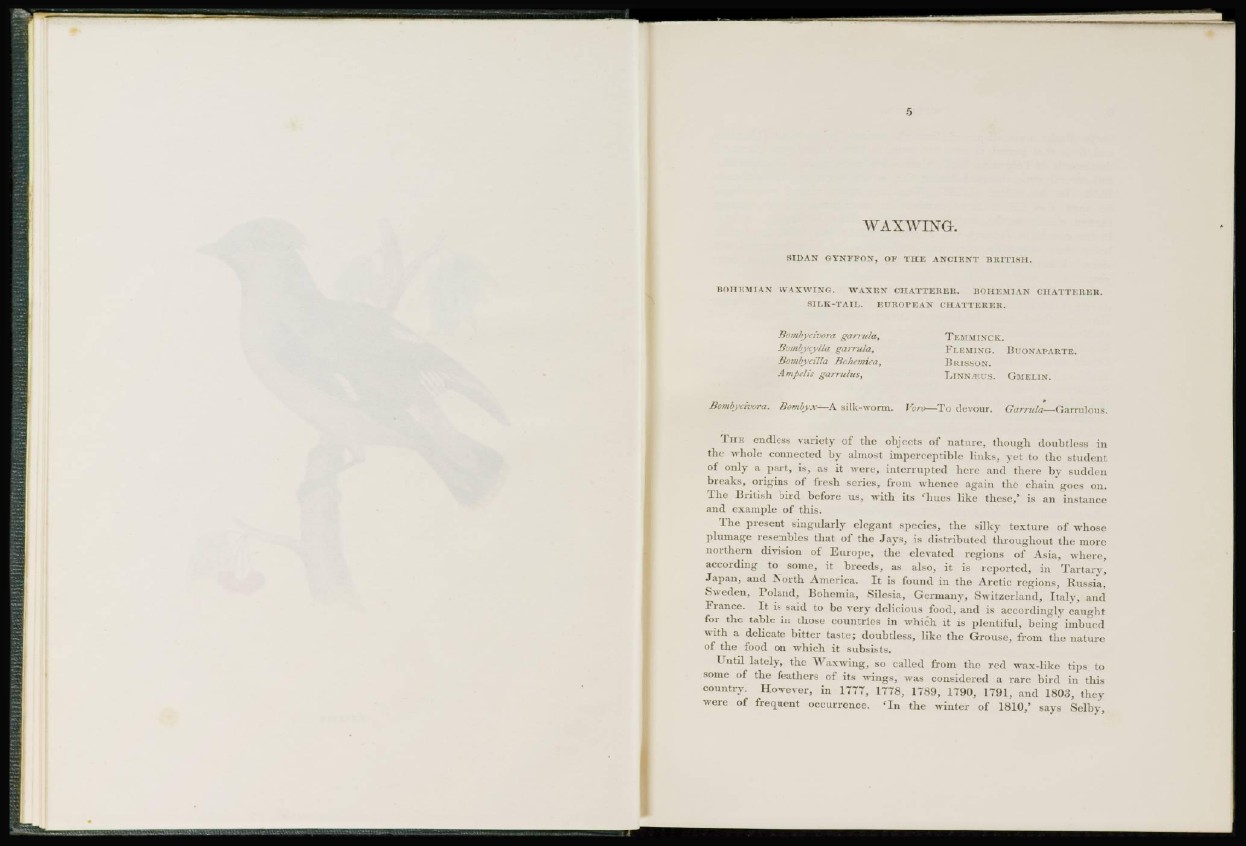
WAXWIÍNG.
SIDAN GYNFFON, OF THE ANCIENT BRITISH.
BOHEMIAN WAX WING. WAXEN CHATTERER. BOHEMIAN CHATTERER.
SILK-TAIL. EUROPEAN CHATTERER.
Bombycivora gárrula, TEMMINCK.
Bombycylla gárrula, FLEMING. BUONAPARTE.
Bombycilla Bohémica, BRISSON.
Ampdis gárrulas, LINNAEUS. GMELIN.
Bombycivora. Bombyx—A silk-worm. Voro—To devour. Gárrula—Garrulous.
THE endless variety of the objects of nature, though doubtless in
the whole connected by almost imperceptible links, yet to the student
of only a part, is, as it were, interrupted here and there by sudden
breaks, origins of fresh series, from whence again the chain goes on.
The British bird before us, with its 'hues like these,' is an instance
and example of this.
The present singularly elegant species, the silky texture of whose
plumage resembles that of the Jays, is distributed throughout the more
northern division of Europe, the elevated regions of Asia, where,
according to some, it breeds, as also, it is reported, in Tartary,
Japan, aud North America. It is found in the Arctic regions, Russia,
Sweden, Poland, Bohemia, Silesia, Germany, Switzerland, Italy, and
France. It is said to be very delicious food, and is accordingly caught
for the table in those countries in which it is plentiful, being imbued
with a delicate bitter taste; doubtless, like the Grouse, from the nature
of the food on which it subsists.
Until lately, the AVaxwing, so called from the red wax-like tips to
some of the feathers of its wings, was considered a rare bird in this
country. However, in 1777, 1778, 1789, 1790, 1791, and 1803, they
were of frequent occurrence. ' In the winter of 1810,' says Selby,